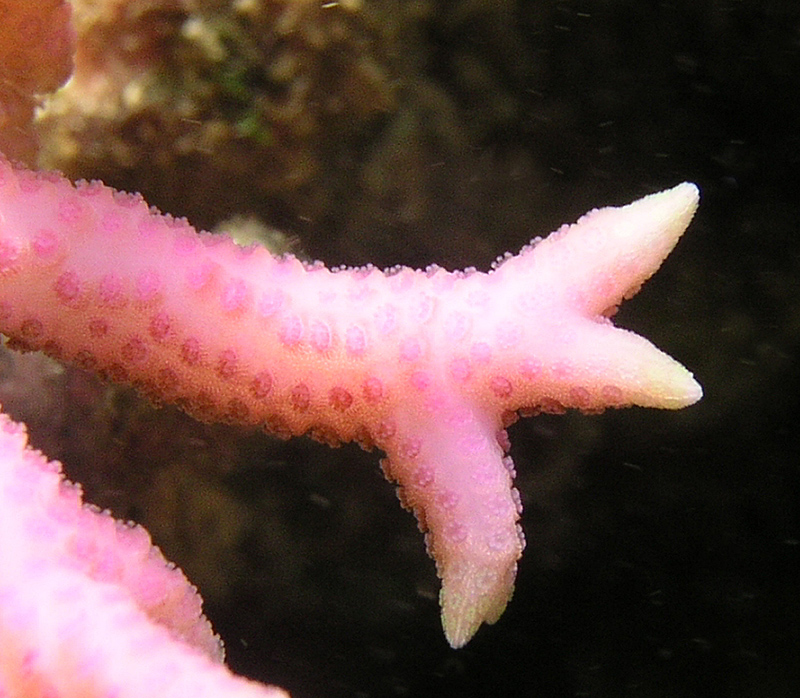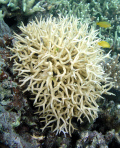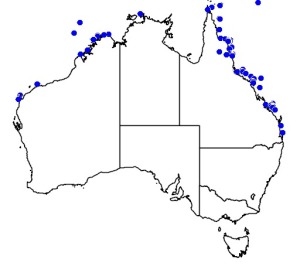Colours
Distinguishing features
A coral that forms colonies with thin pointed branches that are generally compact bushes. Corallites are small and aligned in rows along the branches. Colour is typically light brown or pink.
Size
- Size data has not been obtained.
Synonyms
Distribution
Distribution and habitat preferences
Protected lagoons and back reef margins.
Can be found in most habitats around Lizard Island.
Behaviour
S. hystrix is a common and geographically widespread species that is common in shallow reef environments.
The reproductive strategy of this species reflects its opportunistic ecology. S. hystrix is a broadcast spawning hermaphroditic brooder, with the male gametes mobile. The fertilised embryo develops in situ, hence the term brooding corals. Like P. damicornis, it does have the ability to produce asexual planulae as well. Most planulae settle within 100m of the parent colony, however in several populations, the genetic signtaures of more distantly derived larvae were also detected.
Web resources
References
- Ayre, D.J. and T.P Hughes (2004). Climate change, genotypic diversity and gene flow in reef-building corals, Ecology Letters, 7: 273-278. LIRS catalog number 852.
- Baird, A.H. (2001). The ecology of coral larvae: settlement patterns, habitat selection and the length of the larval phase, Ph.D. thesis, James Cook University. LIRS catalog number 716.
- Baird, A.H., J.R. Guest and B.L. Willis (2009). Systematic and biogeographical patterns in the reproductive biology of scleractinian corals, Annual Review of Ecology, Evolution and Systematics, 40: 551-571.
- View all references









